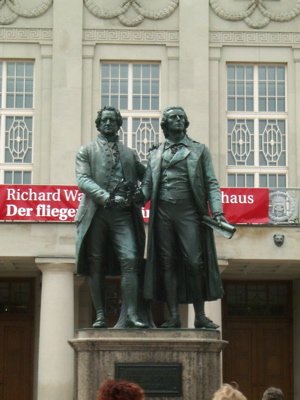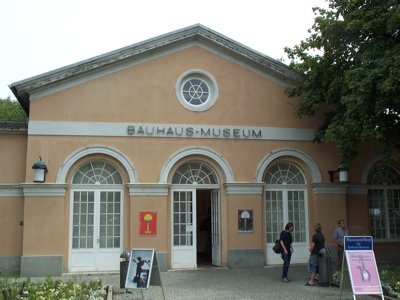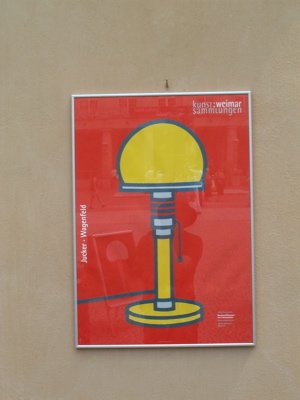
Weimar: the spiritual centre of the German renaissance and home of Goethe. The statue of him standing with Schiller, that other German icon of poetry and literature, adorns the Theatreplatz, flanked by the city’s theatre, itself a building loaded with historical meaning. It was there where the age of the Kaisers came to an end and the short lived Weimar Republic was declared in 1919.

Right across the theatre is a building that documents yet another iconic period of German history in the 20th century, that of the Bauhaus. The Bauhaus Museum, a rather small building, has an interesting collection of sketches, prints, models and finished pieces produced at the Bauhaus, the revolutionary design school that was founded 1919 by architect Walter Gropius in Weimar. He advocated the union of art, craftsmanship and industry. The Bauhaus had such an influence on 20th century modern design, that many of the concepts developed there are taken for granted in our contemporary homes, offices and cities.

The Museum houses pieces of original Bauhaus furniture, manufactured at the workshops for which the school was so famous. Books about Bauhaus design are also abundant at the entrance of the museum.
Great master of design, architecture, painting and sculpture such as Itten, Klee, Kandinsky and Moholy Nagy and Schlemmer taught at the Bauhaus. And although today’s Weimar celebrates the legacy of the Bauhaus, the small conservative town barely tolerated the ‘weirdoes’ of the avant-garde back in the 20’s of the last century, condemning them as Communists or anarchists.
When the Nazis started to gain power in local municipalities such as Weimar, they only showed distaste for modernist philosophies and decided to kick the Bauhaus out from Weimar and replace it with a school that follows their conservative Nationalistic “Blut und Boden” (Blood and Land) approach to art and building. Gropius and his team moved to Dessau and re-started the Bauhaus there, this time in a splendid modern building of their own, only to be forced our by the Nazis a few years later.